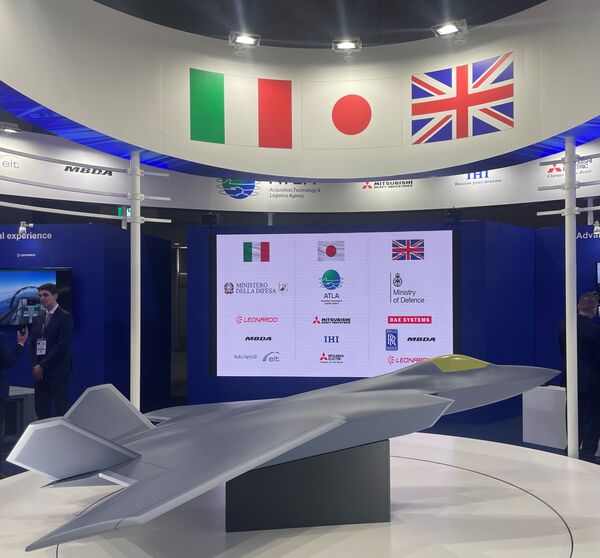
A model of the GCAP fighter displayed at DSEI Japan 2023 in Chiba. (Janes/Jon Grevatt)
Japan is considering the implementation of further reforms to support military exports. Prime Minister Fumio Kishida said on 6 March that the additional reforms are necessary to allow future Japan sales of the Global Combat Air Programme (GCAP) aircraft to international customers.
Speaking at the House of Councillors budget committee, Kishida said that additional export reforms – to support GCAP sales – are required for three reasons: to reduce GCAP production costs, to support Japan's national security, and to ensure Japan is recognised as a reliable partner in international defence joint development programmes.
Japan is developing the GCAP alongside Italy and the UK under a trilateral partnership announced in December 2022.
“The UK and Italy consider promoting the transfer of finished products to third countries to lower procurement prices as an important element of their contribution, and [they have] requested that Japan take a similar response,” Kishida said in comments released by the Komeito party, the junior partner in the Japanese coalition government.
“In order to develop fighter jets suitable for Japan's security environment … we believe that it is in our national interest to establish a mechanism that allows for direct transfers and to secure a position that can contribute on an equal footing with Britain and Italy.”
Kishida added, “In addition, if Japan does not have a mechanism to directly transfer [GCAP] … Japan will be recognised internationally as unsuitable as a partner country for international joint development and production… If it becomes difficult to participate in international joint development and production it will become difficult to acquire the equipment with the performance that Japan requires, which will impede Japan's defence.”
Looking to read the full article?
Gain unlimited access to Janes news and more...
